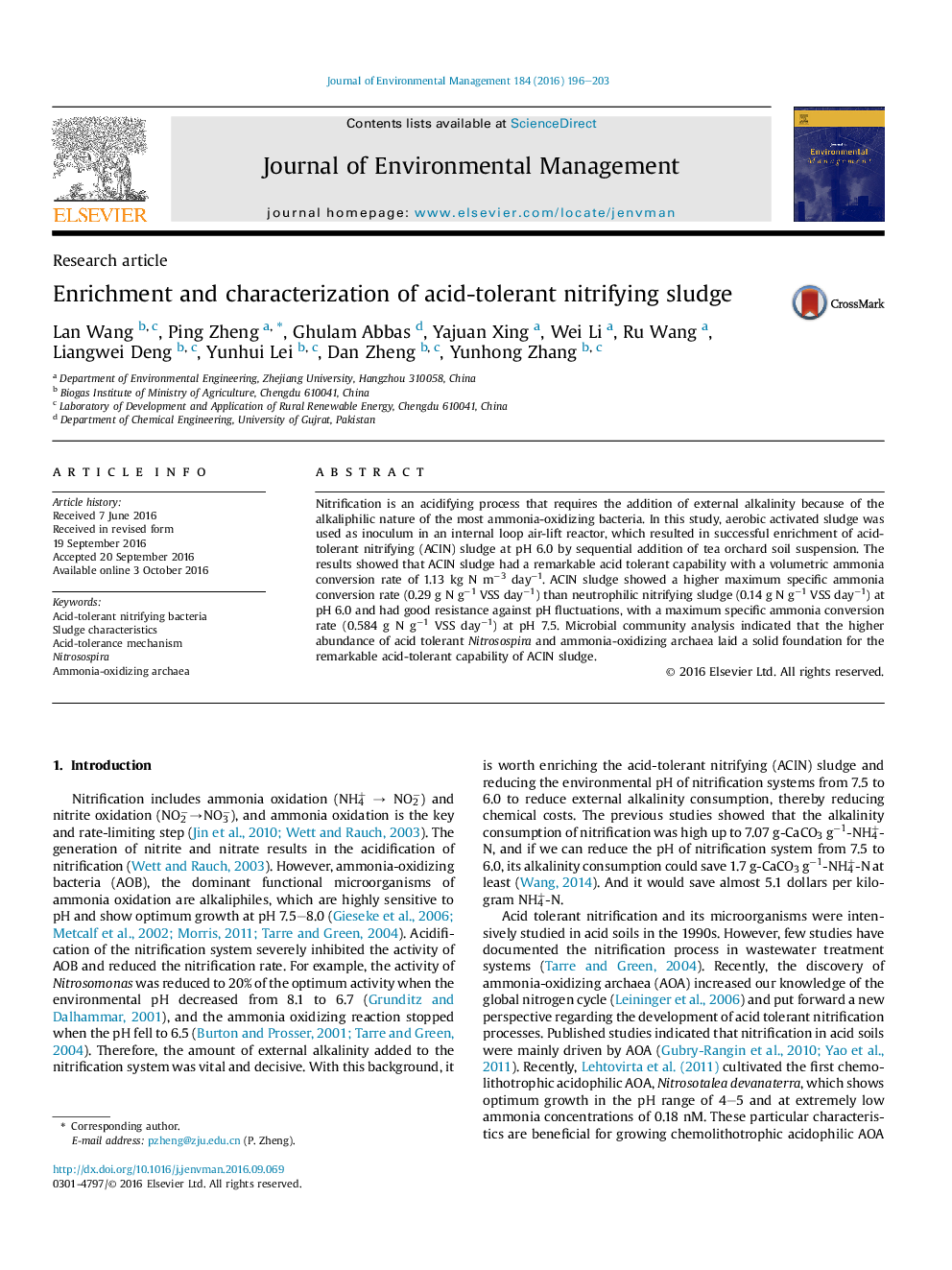| Article ID | Journal | Published Year | Pages | File Type |
|---|---|---|---|---|
| 5117084 | Journal of Environmental Management | 2016 | 8 Pages |
â¢An acid-tolerant nitrifying sludge was successfully enriched at pH 6.0.â¢It had a high volumetric ammonia removal rate of 1.13 kg-N mâ3 dayâ1 at pH 6.0.â¢It had a high specific ammonia conversion rate (0.29 g-N gâ1 VSS dayâ1) at pH 6.0.â¢It tolerates acid due to the dominant Nitrosospira and ammonia-oxidizing archaea.
Nitrification is an acidifying process that requires the addition of external alkalinity because of the alkaliphilic nature of the most ammonia-oxidizing bacteria. In this study, aerobic activated sludge was used as inoculum in an internal loop air-lift reactor, which resulted in successful enrichment of acid-tolerant nitrifying (ACIN) sludge at pH 6.0 by sequential addition of tea orchard soil suspension. The results showed that ACIN sludge had a remarkable acid tolerant capability with a volumetric ammonia conversion rate of 1.13 kg N mâ3 dayâ1. ACIN sludge showed a higher maximum specific ammonia conversion rate (0.29 g N gâ1 VSS dayâ1) than neutrophilic nitrifying sludge (0.14 g N gâ1 VSS dayâ1) at pH 6.0 and had good resistance against pH fluctuations, with a maximum specific ammonia conversion rate (0.584 g N gâ1 VSS dayâ1) at pH 7.5. Microbial community analysis indicated that the higher abundance of acid tolerant Nitrosospira and ammonia-oxidizing archaea laid a solid foundation for the remarkable acid-tolerant capability of ACIN sludge.
